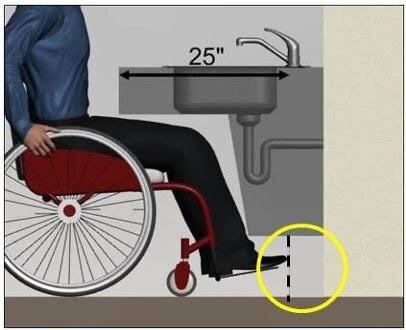
Starting a business comes with many considerations. One of those includes marketing your business to your target audience and emphasizing your strengths as a brand. But, there’s another factor beginner business owners fail to consider, namely, customer consideration.
Accommodating your customers is more than catering to requests they make. It’s also figuring out what they need in advance and making your establishment easier to navigate. This aspect is vital for customers with disabilities.
The Americans with Disabilities Act (ADA) was created with that consideration in mind. It requires businesses to make products and services more accessible for disabled customers. If you don’t know how to make your business ADA compliant, here are some things that can point you in the right direction.
Deciding where to place essential facilities is something you can’t do thoughtlessly. It affects many factors in your establishment, such as customer flow, ergonomics, and service efficiency. A building with a good layout will serve its customers more efficiently and increase customer satisfaction in the process.
It also plays a big part in ADA compliance, particularly accessibility. If you expect a customer to use an item or facility frequently, you should place it conveniently. Building entrances and exits and service providers are critical to consider.
For example, if your building has a raised entrance, it should be accessible for the movement impaired. Most businesses comply by installing wide wheelchair ramps with low sloped angles. If you don’t have space for that, you can place a wheelchair lift instead.
Visibility is another factor that determines accessibility. While the location is one of its key components, design is also an aspect you shouldn’t neglect. It includes the facility’s size, shape, and visual indicators.
Color and composition are usually the first things that come to mind regarding visibility. But, it would also help if you consider how users can perceive it through other senses. ADA compliance enforces that by requiring businesses to use tactile indicators in their premises.
Besides writing your signs in text, you should also write it in Braille of Grade 2. You should also use directional indicators for entrances and exits, such as tactile paving or floor LEDs.
Your building facilities should be easy to utilize for everyone, including disabled users. Many often fail to consider their aspect during design since they expect customers to be non-disabled individuals. Fortunately, these additional considerations for ADA compliance tend to be small and easy to implement.
Some of these considerations include installing handrails to assist movement impaired customers better. Others involve modifying the shape of an item to make it more ergonomic for those with disabilities.
For example, you should avoid using door knobs for your doors. Instead, opt for lever handles or, even better, push-pull doors. Door pressure is also another aspect you shouldn’t fail to consider. It must be sufficiently strong to keep the door closed but weak enough for people to push or pull without exerting themselves.
Designing your building to be more accessible can get admittedly tricky, especially if you’re a beginner. But, given ample time and serious consideration, anyone can do it.
Besides being required by the law, it also provides businesses with additional benefits. It can give you a definite advantage over your competitors and improve your reputation significantly when you do it right.
If you need more help regarding ADA compliance, you might want to consider checking out All Things Inspector’s resources. We cover various building code topics, including ADA compliance, commercial building inspection, and more. Check out our shop, too, for inspection materials.

Certain tools must be in an ADA inspection tool kit without fail. These tools are essential in carrying out an ADA inspection. They include a

The Americans with Disability Act (ADA) is a federal law that is against discrimination against individuals with disabilities. This law is designed to ensure equal
